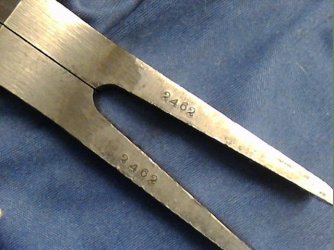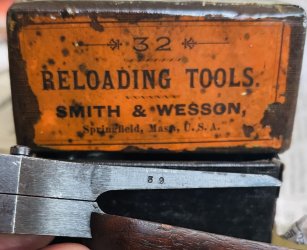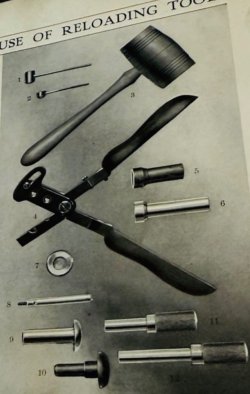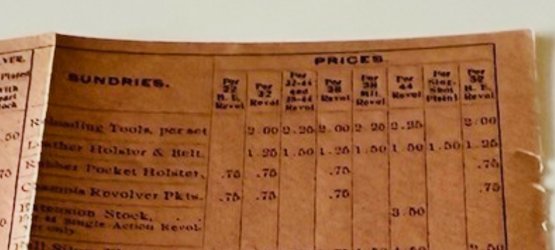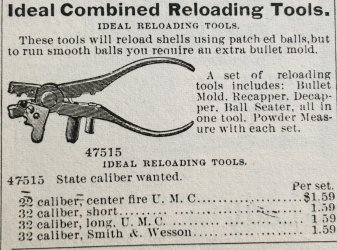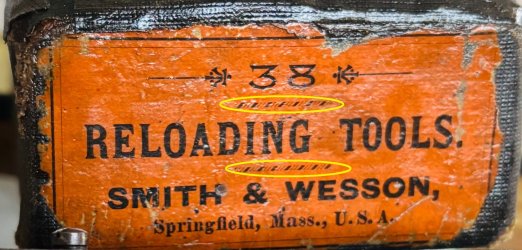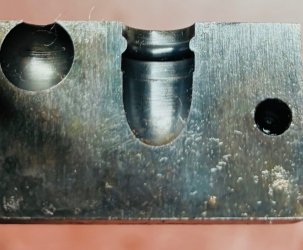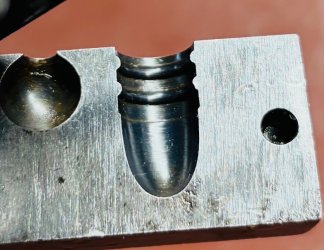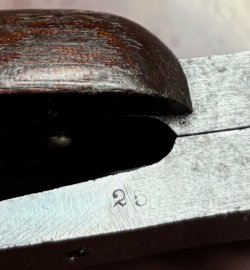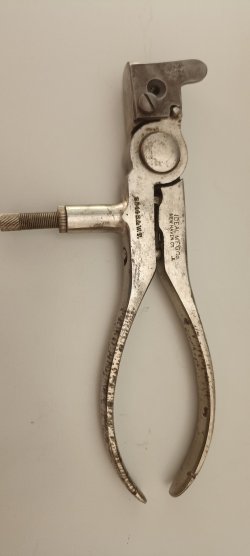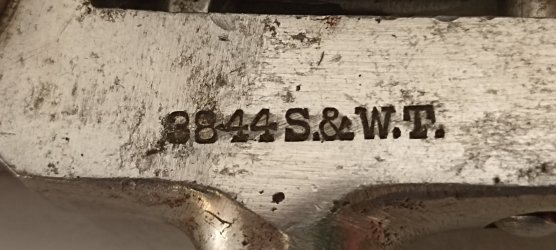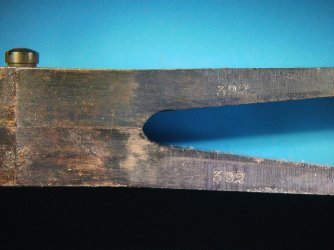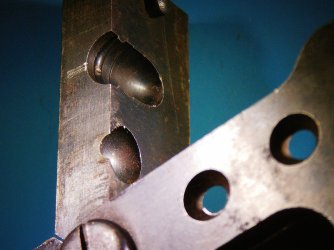I just picked up this somewhat rare 32-44 Peanut mold. I was starting to clean it up when I noticed the typical matching numbers under the Walnut scales were 4 digit. Most that I recall seeing were 2 or 3 digit. I always assumed that they were assembly numbers.
However, in the Neil & Jinks book on page 216 they list SERIAL NUMBER STAMPED under the wood grip. Assuming this is correct it would be possible to get an idea of how many were actually made?
Maybe those who have peanut molds can carefully remove one scale and post the number they find?
Murph
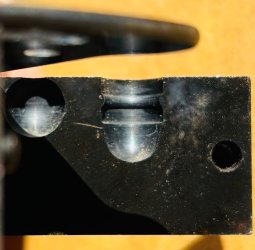

However, in the Neil & Jinks book on page 216 they list SERIAL NUMBER STAMPED under the wood grip. Assuming this is correct it would be possible to get an idea of how many were actually made?
Maybe those who have peanut molds can carefully remove one scale and post the number they find?
Murph





